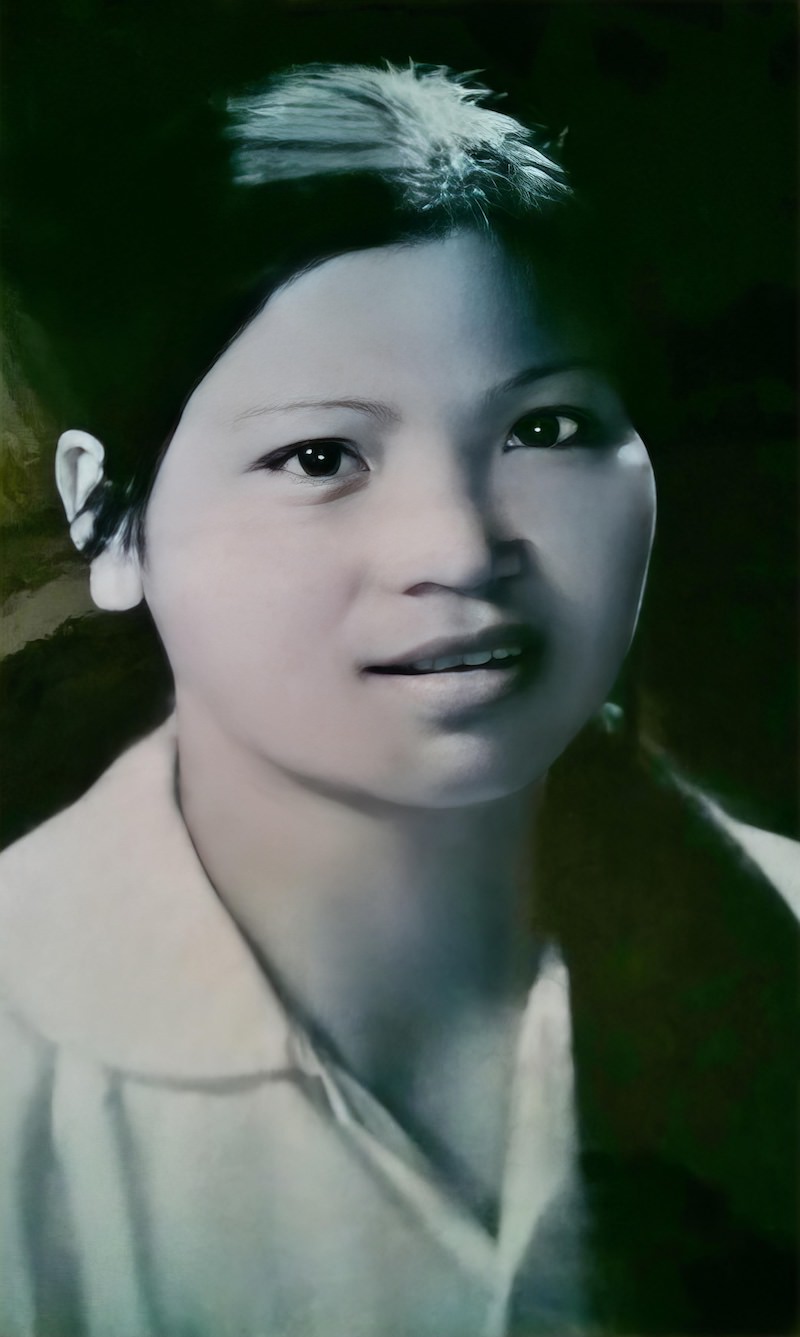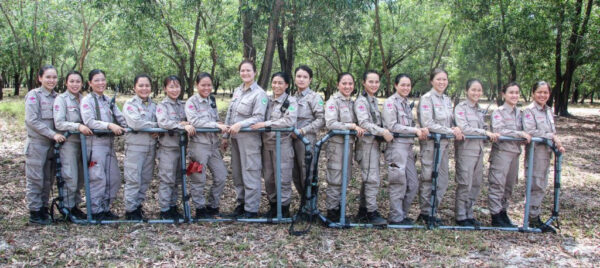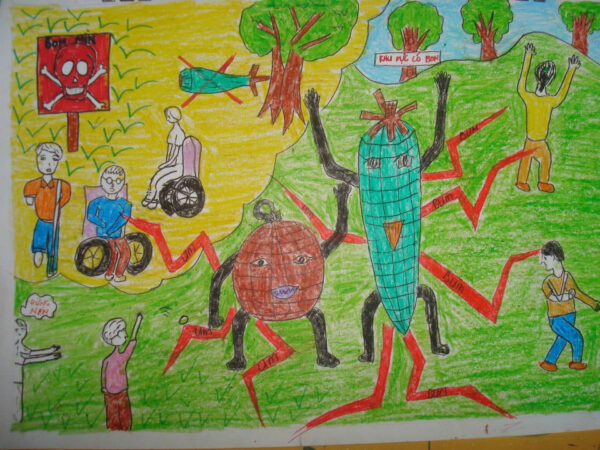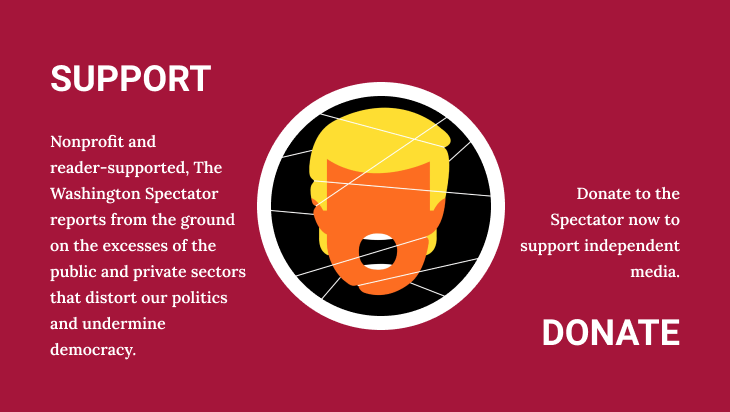I was born in June 1976 in Đông Hà, and my birth certificate bore the seal of the Republic of South Vietnam. Later that year, it merged with the Democratic Republic of Vietnam to form the Socialist Republic of Vietnam. When I was nearly 2, my family moved to the nineteenth kilometer of Route 9, where my father worked as the head of the basic construction unit of the Tân Lâm Black Pepper Collective Farm, the first of its kind in the liberated South. The farm’s operations encompassed the former Camp Carroll and Mai Lộc Special Forces Camp. I spent my childhood there, finishing primary and secondary school from 1982 to 1991.
As a kid, I was captivated by geography. I’d spend hours poring over world maps or spinning a globe, imagining myself exploring as many countries as I could. The war carved deep wounds into my family’s story. My grandfather, a Việt Minh guerilla commander, was killed in 1950 when my mom was just 3, leaving her to grow up under the shadow of that loss. It shaped her—she later joined the war protest movement led by Buddhist monks in the early 1960s, a choice that got her arrested and locked up in Hue for three years. After her release, she threw herself into the fight, joining the National Liberation Front from 1967 to 1969, the bloodiest years in Quảng Trị Province, the northernmost province in what was then South Vietnam. She was wounded three times and had a couple of close calls—narrow escapes when she faced patrolling American GIs and even a Huey helicopter.

Hien’s mother, Phan Thi Hanh
Project RENEW’s area of operations, Quảng Trị Province, is about 43 miles square—smaller than the state of Delaware—with a population of rural farmers and two small towns. Yet it was pummeled by the most intensive aerial bombing of the Vietnam War—including widespread carpet-bombing by B-52 bombers—making it by far the most bombed province in Vietnam. Besides the 750- and 500-pound bombs delivered by aircraft, many of which remain in the ground unexploded, Quảng Tri suffered intense land battles that left the surface littered with a seemingly limitless number of every type of bomb used in ground combat, from cluster bomblets and artillery shells to hand grenades, rockets, mortar rounds, and mines. Together they make Quảng Tri the most bombed place on earth.
As one academic study put it, “Quang Tri province was basically bombed flat during the war, with most of its capital and infrastructure destroyed: only 11 of 3,500 Quang Tri villages were left un-bombed by the end of the war.”
—from the Project RENEW website
Before I started working at RENEW, I had known (the co-founder) Hoàng Nam since 2000—the year I transferred from Khe Sanh High School, where I had spent two years teaching English, to the Provincial Department of Home Affairs. There, I worked as an interpreter and secretary for a Swedish-funded public administration reform project. I had been well acquainted with Project RENEW since its inception. In 2003, my department hosted a workshop to explore strategies from international nongovernmental organizations operating in Quảng Tri to boost local economic development. American Vietnam veteran Chuck Searcy attended and proposed promoting tourism by attracting American veterans revisiting their former battlefields in Quảng Tri Province. In May 2008, Chuck and Nam interviewed me for a position at Project RENEW. Their questions centered on my background, work experience, and my reasons for joining their team, given my 10 years as a public official. It was remarkable to be interviewed by a colleague from the public sector—and equally striking to face questions from an American veteran around my mother’s age. When I told my mother in May 2008 that I was joining Project RENEW, she backed me without hesitation. I really wanted her to meet Chuck Searcy and the others, to see this bridge between past foes, but she passed away from a heart stroke in 2009, at 62. Her grit, her sacrifices—they still push me forward every day.
Chuck’s vision materialized in 2011 when Project RENEW dedicated the Mine Action Visitor Center in Đông Hà, the provincial capital of Quảng Tri Province.
Quảng Tri’s position on the border of the former North and South Vietnam, the DMZ, made it a major battleground. In 1966–67, U.S. forces set up firebases along the border—at Camp Carroll, Cồn Thiên, Gio Linh, Cam Lộ, Đông Hà, and The Rockpile—which became the focus of large ground battles with the North Vietnamese Army (NVA) for control of the border and northern Quảng Trị. Best known of these battles is the multi-division siege by the NVA of the U.S. Marine base at Khe Sanh in western Quảng Tri, in the spring of 1968. Here, American B-52s pulverized five square miles around the base with 100,000 tons of bombs—probably the heaviest single bombing in the history of warfare. These giant planes, each carrying up to 108 bombs totaling 60,000 pounds, would attack in large groups that destroyed everything in a “box” over a mile.
The average number of bombs and rockets dropped on a district in Vietnam during the war was 32 per square kilometer, and the worst districts had over 500. The district containing Quảng Trị City received 3,148 per square kilometer, and the rest of the province was by far the most heavily bombed in the country.
This history is still lying in the soil of Quảng Tri. Not just the large bombs, but also many thousands of cluster bomblets, artillery shells, rockets, grenades, mortar rounds, and mines are scattered over the landscape. Although many of the large bombs are deep, most of these smaller infantry weapons lie near the surface, often becoming visible when the rains wash the soil away. They appear in the beaten earth of school playgrounds, in gardens, under houses, in village ponds, and in rice paddies and forestry.
Since the inception of Project RENEW, the organization’s bomb and mine clearing teams, which include the first all-women team, and other teams managed by international NGO partners have destroyed 815,952 explosive devices, cleared 207,158,581 square meters of land, mostly in known former battlefields, answered 13,950 emergency calls when unexploded ordnance has been spotted, and have given classes to 378,685 children about the dangers of UXO.
—from the Project RENEW website

The first all-women bomb- and mine-clearing team
The most satisfying aspect of my work with Project RENEW is seeing the reconciliation unfold between Vietnam and the United States—two nations once locked in conflict—through the efforts we’ve poured into this mission. Over my 17 years with the project, I’ve watched the partnerships we’ve built tackle the lingering scars of war, like unexploded ordnance, or UXO, and dioxin contamination, and it’s been incredibly meaningful. U.S. support has helped transform Quảng Tri, the most bombed place on earth, into a place where progress is possible, and the mine action model we’ve developed here has earned praise from high-ranking U.S. officials. Hosting six U.S. ambassadors alongside my colleagues and partners has been a privilege, and my five trips to the United States between 2013 and 2024 have deepened my sense of this connection.
But what truly resonates with me is the personal impact—knowing our work cut accidents from an average of 65 a year for decades down to zero between 2019 and 2021, a historic milestone. That’s lives preserved, families kept whole. I still carry the memory of an older schoolmate killed by a cluster bomb in the mid-1980s near Camp Carroll, and the echoes of other tragedies from my village. Being part of this change—sparing others that grief—makes every moment with Project RENEW profoundly rewarding.
In addition to funding from the U.S. State Department through its international partner, Norwegian People’s Aid, for UXO removal operations, Project RENEW receives private donations, primarily from American veterans. These donations have come through the Vietnam Veterans Memorial Fund, which supported RENEW from its inception until May 2011, and more recently through Friends of Project RENEW, a U.S.-based nonprofit where Chuck Searcy serves as a board member. Although these private contributions are significantly smaller than the UXO removal budget provided by the State Department, they have enabled RENEW to expand its mission into Quảng Ngãi Province with risk education and victim assistance initiatives.
Project RENEW collaborates with local government, community organizations, and teachers’ unions to deliver risk education programs to schoolchildren and adults. Artificial limbs and assistive devices were given to more than 3,000 war amputees by its Prosthetics and Orthotics mobile program in the remotest villages. Also provided are micro-credit loans and other income support to families affected by explosions and support for six vocational facilities for blind war victims. The government of Ireland through the Irish Embassy in Vietnam has provided direct funding to RENEW’s risk education program and victim assistance since 2015 and 2016 respectively. Thanks to this valuable support, RENEW is enabled to ensure safety for children and adults and improve quality of life for those affected by unexploded ordnance and Agent Orange.
—from the Project RENEW website
One of the biggest challenges we have is supporting families dealing with severe disabilities from Agent Orange/dioxin exposure. Quảng Tri was drenched in defoliants during the war, and the impact lingers in so many households. We desperately need more funding to deliver practical aid—things like home modifications, health care, and income opportunities—right to their doorsteps to ease their burdens. Another challenge is resource allocation. While we’re clearing UXO, we can’t let up on risk education for kids born decades after the war or assistance for victims. It’s a tough balance to maintain—preventing new tragedies while helping those already affected rebuild their lives.

Child’s drawing made at the Mine Action Visitors’ Center
Veterans and other Americans have worked intensely on the [Agent Orange] issue with Vietnamese friends and colleagues since the mid-1990s. Around that time, [Searcy] began to raise questions about Agent Orange—and demanded to know why the U.S. government was doing nothing to help the Vietnamese deal with its lingering consequences. The U.S. provides billions of dollars a year in benefits to U.S. veterans for Agent Orange–related health issues. With the persistent efforts of U.S. and Vietnamese veterans, American citizens, and others visiting Vietnam or living here, the attitude of the U.S. government gradually changed. Significant cooperation began in 2015 with the cleanup of toxic “hot spots” where dioxin (the highly toxic chemical by-product of Agent Orange) was still present in soil and sediment at the Da Nang airport. That project was completed, and now the last big project at the former U.S. air base at Bien Hoa, near Ho Chi Minh City, was underway until USAID was disbanded in February, and all contracts for the work were canceled.
As noted, since 2008, [Project RENEW’s] principal international partner has been Norwegian People’s Aid (NPA), a global leading humanitarian disarmament and mine action organization, which supports RENEW’s explosives clearance program and administrative staffing. At present, major funding for technical demining components of RENEW and NPA comes from the U.S. Department of State.
—from the Project RENEW website
If that funding is lost, the critical UXO removal work conducted in Quảng Trị by international mine action organizations would be halted, jeopardizing the goal of making Quảng Tri Vietnam’s first province free of UXO impacts. This U.S. government funding has been vital and irreplaceable in supporting the efforts of Quảng Tri authorities and their international partners.
For younger people in Vietnam, especially in rural areas, the war feels far off—50 years have passed since the fighting stopped. But its remnants, like UXO, keep it present. Kids and their parents still come across these explosives sometimes, and we drill into them the three R’s: “Refrain from tampering, Retreat, and Report” to stay safe. After three years of zero accidents, four incidents since 2022 have been a grim wake-up call that the threat hasn’t vanished. For the people involved, the war isn’t just a story from the past—it’s the reality of navigating a landscape still scarred by it.
Ngô Xuân Hiền is the communications and development director of Project RENEW in Quảng Trị, Việt Nam.


0 Comments